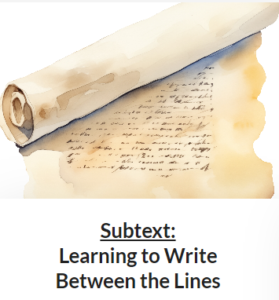Are you ready to evolve as a writer? In this week’s edition of Storylines, we’ll explore key strategies to help you grow your skills, embrace new challenges, and become the best storyteller you can be.
Are you ready to evolve as a writer? In this week’s edition of Storylines, we’ll explore key strategies to help you grow your skills, embrace new challenges, and become the best storyteller you can be.
Today’s discussion is all about how age influences character development in our writing. It’s more than just a number; it’s a dynamic element that can shape your ancestors’ perspectives, decisions, and interactions.
Today, we’re diving into the beautiful chaos of first drafts. They might be messy, full of plot holes, and teeming with undeveloped characters, but that’s their magic. First drafts are our raw, unfiltered creativity, and they pave the road to revisions where the real magic happens. So, embrace the mess, because every brilliant story starts with a first draft that’s rough around the edges. Let’s celebrate this crucial step in our writing journey and see how we can transform our initial ideas into polished, compelling narratives.

Show, Don’t Tell you’ve heard it from me, perhaps other writing teachers, in books and on blogs across the internet. But what does it really mean? In today’s Storylines, we look at the difference between showing and telling, along with where to use it in your stories. We’ll also tell you all about the upcoming Show & Tell Summit and how it is going to answer all your questions.
Unlock the hidden layers of your writing in our latest lesson, “Writing Between the Lines: Understanding Subtext. Dive into the art of subtext and discover how to convey powerful emotions and unspoken truths without saying a word. This eye-opening video will help you understand what is subtext and why we need subtext in our family history stories. Don’t miss out—click to watch and learn about he subtle nuances that can elevate your writing from good to unforgettable!

In last week’s episode of Storylines, How to Bring Your Ancestor’s Unique Voice to the Page we discussed the 4 elements that help give your ancestor a distinct voice. This week we are going to build on our dialogue discussion by identifying why our ancestors are talking and ensuring it serves the needs of the story. We’ve got 3 tips for you today to keep in mind when crafting your story dialogue.
| “Beneath every line of character talk, the writer must create a desire, intent and action. That action then becomes the verbal tactic we call dialogue.” |
| – ROBERT MCKEE – |
In this week’s video, we delve into the art of bringing your ancestor’s voice to life on the page. Join us as we unravel the intricate elements that writers employ to craft a character’s unique voice. Don’t miss this opportunity to enhance your narrative skills and infuse your characters with depth and authenticity. Tune in for a masterclass on character voice creation that will elevate your writing to new heights!
In this week’s episode of Storylines, we take a closer look at backstory and identify the 3 most common mistakes writers make when they incorporate backstory into the larger narrative as well, we have 3 tips to help you improve your use of backstory.
We all find ourselves there at some point. At that time in our writing when the motivation has left us and all we are left with is the hard work. Join me in today’s Storylines for 3 strategies to reignite your writing spark.
What is scene? What is summary? And how do we decide when to use one or the other? That’s what we’re discussing in this week’s Storylines.